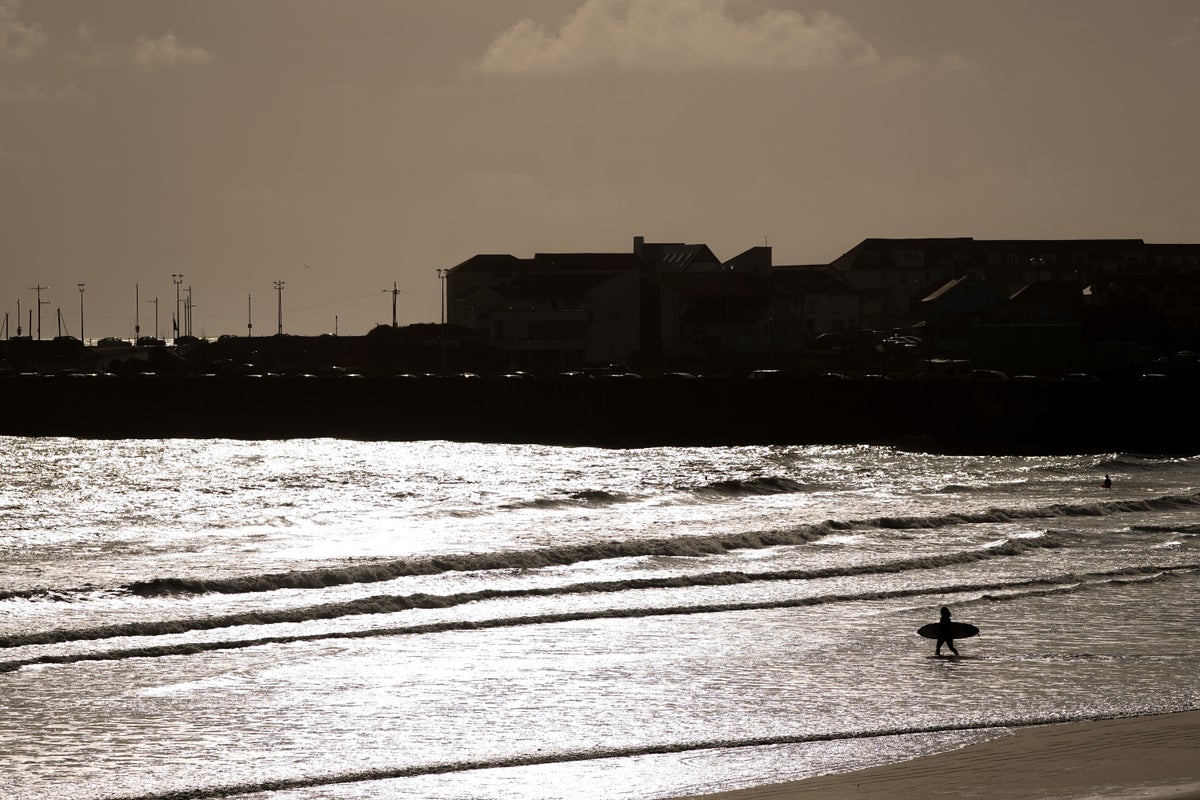
A heavy rain yellow weather warning has been issued for parts of South Wales by the Met Office.
The yellow weather warning is in place between 8pm on Thursday and 2am on Friday.
Remnants of Storm Agnes could bring 50mm of rainfall over a few hours to parts of South Wales as the storm works its way out to sea.
Flooding is expected to occur which could lead to difficult driving conditions in the region and a chance of delays to train and bus services.
Homes and businesses could also be flooded, causing damage to buildings.
Grahame Madge, a spokesperson for the Met Office, told the PA news agency: “There’s a couple of areas of low pressure, one to the far north west of the UK that will bring some quite lively rainfall to parts of Scotland.
“And another one out south west, which could well trigger concerns about the impacts of heavy rain in parts of South Wales.”
On Friday, temperatures may drop to single digits and there could be grass frost in isolated areas of far northern England.
More heavy rain is forecast on Saturday with a possibility of coastal gale force winds in the north-west of Scotland, and ferry services could be disrupted.
Storm Agnes hit the UK on Wednesday with gale force winds causing flight cancellations, flooding and power outages.
The first named storm of the season drummed up a high of 79mph winds in Capel Curig, a village in Wales, on Wednesday evening.
Elsewhere, winds were recorded reaching speeds of 68mph in Aberdaron, Wales, 58mph in Glenanne, Northern Ireland, and 54mph in Camborne, Cornwall.
Agnes triggered a series of Met Office yellow weather warnings for wind and rain across the UK, with forecasts of damaging winds and stormy seas.
Eleven domestic flights and several P&O Ferries services were cancelled between Northern Ireland and Scotland, according to The Independent.
A woman had to be rescued from her car in Co Londonderry, Northern Ireland, after it was trapped by floodwater.
An easyJet plane was unable to land in Belfast on Wednesday afternoon and the airline told the Belfast Telegraph that the difficulty was due to “winds gusting outside the limits of the aircraft”.
Around 135 properties on the Isles of Scilly, in the south-west of England, experienced power outages for just under four hours earlier on Wednesday, according to National Grid.
Ireland, where Agnes first made landfall, saw flooding and travel disruption, with fallen trees blocking roads and flights and ferries also being affected.
A roof was blown off a building in Co Cork.
The RNLI had warned of “dangerous conditions” on the coasts.
Clifden and Achill Island RNLI braved the storm to rescue a lone sailor in a vessel located 10 miles west of Clare Island.
The rescue organisation said in a statement: “Sea conditions at the time were very difficult and the lifeboat crews faced four-metre swells, driving rain and Force 8 winds out at sea.”
Alerts triggered by Storm Agnes included a wind warning until 7am on Thursday, which was cancelled early on Thursday morning.
The warning stretched across Scotland, Northern Ireland and Wales, as well as the south-west of England, the West Midlands and most of the north of England.
There were also rain warnings for much of Scotland until Thursday at 3am.





!["[T]he First and Fifth Amendments Require ICE to Provide Information About the Whereabouts of a Detained Person"](https://images.inkl.com/s3/publisher/cover/212/reason-cover.png?w=600)

